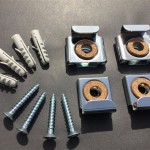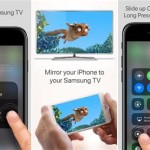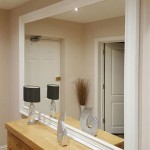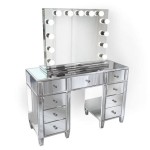How to Mirror TV on Samsung Refrigerator
Samsung's Family Hub refrigerators offer a unique feature: the ability to mirror content from a Samsung Smart TV directly onto the refrigerator's touchscreen. This functionality provides convenient viewing while working in the kitchen, eliminating the need for a separate smaller screen or constantly turning to look at a wall-mounted TV. This article will guide users through the process of mirroring their Samsung TV to their Samsung Family Hub refrigerator.
Prerequisites for Mirroring
Before attempting to mirror, users should ensure they meet the following requirements:
- Both the Samsung Smart TV and the Family Hub refrigerator must be connected to the same Wi-Fi network.
- The Smart TV and Family Hub refrigerator models should support mirroring functionality. Consult the respective user manuals to confirm compatibility.
- Users should be familiar with navigating the Smart TV and Family Hub interfaces.
Step-by-Step Mirroring Process for 2018-2020 Family Hub Models
These models utilize SmartView for mirroring:
- Activate SmartView on the TV: Use the TV's remote to navigate to the source list and select SmartView.
- Initiate Mirroring on the Refrigerator: On the refrigerator's touchscreen, locate and select the SmartView app.
- Select the Television: The refrigerator should display a list of available devices. Choose the corresponding Samsung Smart TV.
- Confirmation and Viewing: The TV screen will now be mirrored on the refrigerator's display.
Step-by-Step Mirroring Process for 2021+ Family Hub Models
These models employ a slightly different process:
- Open SmartThings on TV and Refrigerator: Ensure the SmartThings app is open on both the TV and the Family Hub.
- Navigate to Smart View on Refrigerator: On the refrigerator's touchscreen, open the SmartThings app and navigate to the Smart View section. This may involve selecting “Menu” and then “Smart View”.
- Select your TV: A list of compatible devices will be displayed. Choose the appropriate Samsung TV.
- Authorize connection (if prompted): A pop-up may appear on the TV requiring authorization to allow mirroring.
- Start Mirroring: The TV's content should now be mirrored on the refrigerator's display.
Troubleshooting Common Mirroring Issues
If mirroring fails, consider these troubleshooting steps:
- Network Check: Verify both devices are connected to the same Wi-Fi network and that the network is functioning correctly.
- Software Updates: Ensure both the TV and refrigerator have the latest software updates installed. Outdated software can sometimes cause compatibility problems.
- Distance Between Devices: While not typically a significant factor, excessive distance between the TV and refrigerator might affect performance. Ensure they are within a reasonable range.
- Restart Devices: Try restarting both the TV and the refrigerator. This can resolve temporary software glitches that may be hindering mirroring.
- Check TV's Mirroring Settings: Some TVs have specific settings that need to be enabled for mirroring. Refer to the TV's user manual to confirm these settings are correctly configured.
Optimizing the Mirroring Experience
To enhance the mirroring experience, consider the following:
- Adjusting Refrigerator Screen Brightness: The refrigerator's screen brightness can be adjusted for optimal viewing in different lighting conditions.
- Managing TV Volume: Control the TV volume directly from the television remote, as the refrigerator screen may not offer volume control options.
- TV Content Resolution: The resolution of the content being mirrored will affect the quality on the refrigerator’s screen. Higher resolution content will generally provide a better viewing experience.
Utilizing Mirroring for Different Purposes
Mirroring opens up a variety of possibilities in the kitchen:
- Following Cooking Shows: Easily follow recipe instructions from cooking shows playing on the TV.
- Entertainment While Cooking: Enjoy movies or TV shows while preparing meals.
- Keeping an Eye on News or Sports: Stay updated on current events without leaving the kitchen.
Understanding Mirroring Limitations
While mirroring offers great convenience, it's essential to be aware of its limitations:
- One-Way Mirroring: The mirroring function is typically one-way, meaning interaction with the mirrored content happens on the TV, not the refrigerator screen.
- Potential for Latency: A slight delay between the TV and the mirrored image on the refrigerator might be noticeable, especially during fast-paced action scenes.
- Network Dependency: The quality and stability of the mirrored content depend heavily on the Wi-Fi network's performance. A weak or unstable signal can lead to buffering or interruptions.

How To Mirror Your Tv On Family Hub Refrigerator Screen With The Smart View Samsung Us

How To Mirror Your Samsung Smart Tv The Family Hub

How To Mirror Content On A Samsung Family Hub Refrigerator Tech Tips From Best Buy

Screen Mirror On Family Hub

How To Mirror Your Tv On Family Hub Refrigerator Screen With The Smart View Samsung Us

Screen Mirror On Family Hub

Screen Mirror On Family Hub

How To Mirror A Samsung Smartphone The Family Hub

Stainless Steel 28 Cu Ft 4 Door French Family Hub Fridge Samsung Us

How To Mirror From Your Samsung Smartphone Tv








